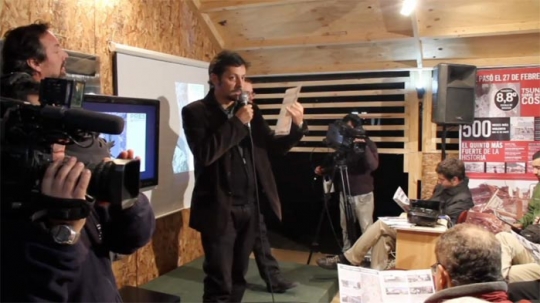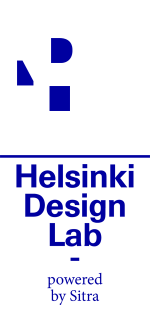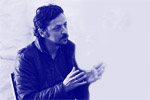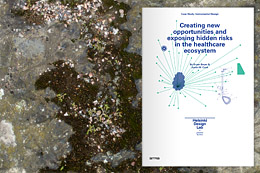All posts by Rodrigo Araya Dujisin
Editors' note: In writing Legible Practises we told the stories of six teams working towards systemic change in their communities, organizations, and institutions. In the book you will find our perspective. Below you will find a personal perspective from Rodrigo Araya Dujisin, who played a key role in the Constitucion case study.
—
Hybrid forums are a tool for balancing the knowledge and interests of different stakeholders, particularly when addressing a controversial subject. The design of the Hybird Forum carefully sets aside hierarchies so that ideas and controversies can be debated more openly and productively. The goal of a Hybrid Forum is to reach agreements on difficult subjects, by establishing shared responsibility for decisions and co-designing mutually agreeable outcomes.
The Hybrid Forum seeks to even out the asymmetries of power by equally valuing different forms of knowledge, perspectives and interests. Rather than smoothing over differences or seeking to eliminate them, the methodological challenge of the Hybrid Forum is use the existence of difference to spark the exchange of knowledge and collective decision-making.
Hybrid forums are spaces where the socio-technical controversies caused by specific overflows take the stage in a more or less institutional way, with the participation of the concerned stakeholders on the one hand and scientists and experts on the other. They are spaces that allow problems to emerge that experts do not see, to reconfigure problems that have already been identified and to create a world that is common to all participants, which must always be open to new explorations and learning processes. The hybrid forum is the creation (artificially, if you like) of relatively symmetrical conditions for dialogue, meaning that it is fundamental to destabilize the unquestionable everyday hierarchies for it to work.

Rodrigo 'diving into controversy' during a Hybrid Forum as seen in the film Mauchos
1. “The one paying for the party does not choose the music”
The common good is the overriding goal and it should serve as the guiding principle for fostering dialogue and seeking consensus. While this may sound simple, in practice it is extremely complex to outline the common good among stakeholders who have different interests. On the contrary, it is very easy to appoint oneself the representative of the common good, but the commonality in such situations is rarely widespread.
While a single entity might fund a Hybrid Forum, their interests alone cannot drive the dialogue. Arauco, a company with interests in the city of Constitución, proposed and financed a new master plan after the city was ravaged by a tsunami in 2010. Tironi Asociados, along with a consortium of other actors, were asked to create an inclusive process that would give the citizens of the city a voice in its reconstruction. One of our first tasks was to convince Arauco that the plan had to be governed by a consortium that was representative of the city and whose members included the authorities, technical experts, companies and the community. At first they looked at us strangely—they were, after all paying, so shouldn’t Arauco have more say?—but they quickly understood the importance of this mandate.
Regardless of who pays, a new master plan would affect the lives of everyone in Constitución, so the governance of the project had to truly reflect the common good at stake. Though they might be the main financiers, it is not guaranteed that the project will be tailor-made to Arauco’s specifications. The one paying for the party does not necessarily choose the music. Both Arauco as well as Codelco, the main promoters of the aforementioned plans, agreed to form a board where the cities’ different stakeholders were represented.
This implies that subjects which are difficult for the funder may emerge during the discussions. For example, in Constitución there was debate in a public forum on the very presence of the Arauco cellulose plant in the city. The controversy was put in the public spotlight in a straightforward way. The main complaint against the plant has to do with the bad smell it produces in the city. While some people proposed removing it from the city, others defended its presence as a source of jobs; the company presented an improvement plan to integrate it into the city better. Arauco emerged from this forum with the commitment upgrade their plant through an investment of approximately $6 million USD. Human odor testers were proposed as part of a community monitoring system, complementing scientific monitoring of the perceived odors.
Producing this type of decision requires putting the common good first, which is beyond the grasp of any one stakeholder. The city itself is the guarantor of the common good and the city consists in all of its dimensions: authorities, experts, businesspeople and citizens. The Hybrid Forum becomes an ad-hoc town square meeting, a democracy, a miniature universe.
—
2. Dive into the controversy
To deploy a conversation on a citywide level you need to seek and to identify the key voices. In addition to the most obvious authorities, leaders and stakeholders, it is important to identify the critical voices, the informal leaders: to represent all possible worlds.
Ethnographic immersion such as this requires the wisdom of a craftsman, the precision of an acupuncturist and Buddhist patience. Getting to know the little stories and characters is fundamental to building bridges, facilitating dialogue, forging consensus and cobbling decisions together.
This implies getting to know the different stakeholders, the big and small discussions, the tensions, and the conflicts in the city. It means engaging both the powerful and the marginal sectors. One must immerse themselves into the city and its many communities in an ethnographic way, seeking to understand them on their own terms.
It comes through having a lot of coffees, sharing many beers, and listening. For example, shortly after starting work in Constitución, we found ourselves in a slightly depressing dark room taking with leaders of the local chapter of the Communist Party, a traditional and respected organization, but one that is very marginal when it comes to the decision-making process in an already marginal city. That night we asked ourselves: What are we doing here? That night we met people who ended up being fundamental to forging agreements on the Master Plan. Our team felt the same way as we met with 14-year-olds, young surfers, street vendors and the local aristocracy. It’s impossible to know a priori who will have the missing pieces of the story that become essential at a later date.
—
3. The Open House
Through practice we learned that the Hybrid Forum works best when it has a physical home in the heart of the city. We call this the Open House. The Open House becomes a symbol of the process itself, while also serving as an operations center for participation. This is where the forums, councils and meetings are held.
We installed the Open House in the main square of Constitución, in her geographic and symbolic center. This might appear to be a frivolous detail, but it was extremely important to process because the Open House is a place that is born without the preexisting valences of public spaces, including municipal and hotel halls or organizational headquarters. As a new place, the Open House is gradually filled with meanings and contents as the participation process progresses. As a neutral space, the community’s trust can be built from a neutral starting point and does not need to overcome past connotations or legacies.
The Open House team must include an appropriate mix of locals and outsiders. Especially in a small town, the outsiders give the process a special touch, as they are not “the same people as always.” The locals give the process social pertinence, in addition to the social networks required for meaningful deployment in the local community.
—
4. The forum as a network: Composition and structure
Upon convening the Open House everything learned in the previously has to be applied with an acupuncturist's precision. The forums did not seek statistically perfect representation, but we were careful to meticulously watch out for the well-worn pathways of power that we had discovered during the early ethnographic immersion. Forums have to reproduce the complexity of a territory; the different social worlds. The forum’s composition is fundamental.
We are not interested in having 1,000 or 5,000 people at a forum if they are homogeneous. We seek a heterogeneous network with a high degree of intermediation. That is, a capacity to build mediating bridges between different social worlds. In network theory this is known as "betweenness." We had authorities, engineers, members of the military, priests, teenagers, radical environmentalists, communists and businesspeople at the hybrid forums in Constitución, a network with the capacity to "infect," to disseminate the conversation throughout the city.
The objective is to have all of the stakeholders, visions and interests on the issue at stake available. If the controversy is the oasis of the desert-city Calama, for example, then farmers, real estate developers, indigenous people, the municipality and businesses with interests in the territory should participate. The friction begins with all the actors at the table and a proposal as a starting point. Hybrid forums open up hidden tensions and conflicts. They are made explicit; all elements are put on the table and a persistent attempt is made to find common ground. This is sometimes a consensus and at other times it is not, but that does not paralyze the process. The parties stake out their positions, but they also leave room for agreements
—
5. Catharsis and overflows
These are processes full of friction, conflict and uncertainty. Hydbrid forums should allow collective catharsis to occur. The mere fact of bringing together diverse stakeholders is an opening for the otherwise-contained tensions to emerge, the scores yet to be settled, the historic demands to be voiced once again. Our experience indicates that it is positive to let this tension be expressed, as a hard fact, and to consider it as a starting point. The worst thing is to ignore them and to rush the search for solutions and consensus.
Catharses are small crises and they are not easy to manage. There is always the temptation to take the moral high ground and to question the other side's legitimacy. This is where facilitation is fundamental for channeling the catharsis from the emotional plane (anger, indignation, feelings of injustice) to the philosophical one (ontological pluralism, accepting the other), followed by the socio-technical plane (consensus, proposals).
We have witnessed all types of catharsis. One of the hardest moments we faced was a four hour confrontation in the Open House, with TV cameras and digital streaming, where people held the company financing the plan responsible for the last 100 years of failures to fulfill promises, frustrations, and damages. In our attempts to move from the emotional to the ontological (everybody deserves respect, everybody makes mistakes, everybody can improve), a person took the microphone and, visibly moved, said that the forum was very difficult to participate in because it was like bringing a rapist and his victim together in a mediation room. The brutality of the metaphor produced a long silence without anybody refuting the premises behind it, not even the company. After a long and uncomfortable silence all sides agreed to try it, to use dialogue to seek a world in common for the future, in this case planning the city. Catharsis is the best investment (of time and emotional energy) for a fruitful dialogue.
—
6. Material dialogue
Engaging in dialogue is a real art, but it can be a nightmare if there is not a concrete subject, issue or controversy. The dialogue at the center of a Hybrid Forum is particularly difficult because it involves participation on the part of actors with different knowledge, biographies, levels of education and interests. To hold productive dialogues it is fundamental that the conversation be given materiality through proposals and conceptualizations that synthesize information, layers, points of view. The more visual and concrete these can be the more effective they will be.
Hybrid forums deal with a specific problem based on a proposal made by an expert team. The rules of the game establish that the proposal can just be questioned or improved, but also that the question itself, the premises, can be changed as well, with the possibility of opening up new questions and new controversies.
We refer to materiality in two ways. First, we refer to the synthesis of information in the form of a PowerPoint presentation, a model, images, graphics that ground the verbalization of proposals in additional media. Second, these slides refer to works, concrete projects that the city wants to implement. This allows grandiose statements like "safety is important" to become embodied in a specific decision that has material consequences.
The materiality for dialogue has two main objectives: to produce dialogues with focus and, second, to democratize or to socialize expert knowledge, valuing other types of knowledge. In other words, it is about producing epistemological symmetry. In general experts hide in their little worlds, protected by their own language, and jealously defend their quotas of power. In hybrid forums they have to validate their expertise with all types of audience. Their credentials are left out of the argument.
This is where wonderful interactions are produced, such as between a PhD in oceanography and a fisherman, between a transport engineer and a taxi driver, an urban developer and a street vendor, and all of this with bureaucrats, business executives and local artists mixed in.
So, what connects this whole mosaic of knowledges, whose interests are confronted on an everyday basis, who use their quotas of power and hold conversations among the deaf? We believe that materiality contributes to producing the grout that holds the mosaic together.
—
7. Sportsmanship and Ontological pluralism
To avoid conversations among the deaf, where each voice tries to impose its perspective, and to avoid instrumental dialogues where each stakeholders comes into the game with a shopping list, there is a need to learn (and to teach) how to deliberate with a sportsmanlike attitude, with fair play. This is almost a form of collective therapy.
There are two fundamental rules here: a sportsmanlike spirit and ontological pluralism. The former refers to being willing to lose something, to taking on more flexible positions to reach what Bruno Latour calls "a world in common."
Ontological pluralism refers to acceptance of the "other" in his full complexity, with his virtues and defects. It will be hard for authentic dialogue to take place if one stakeholder discredits or negates the position and interests of the other. In our everyday lives we use caricatures and simplifications of reality and for a hybrid dialogue there is a need to question and to take apart said simplifications.
If a businessperson calls an environmentalist an "eco-terrorist" or if the businessperson is called a "thief," then the existence of the other is being denied. How can such caricatures be taken apart, at least for the purposes of the Forum? The answer is: with patience, with many one-on-one conversations and with a great deal of frankness on the part of the facilitator during the hybrid forums. The benefits are not long in coming and the diverse stakeholders let down their guards and open themselves up to dialogue with the "other."
Skillful facilitation is fundamental. Dialogue often rises in tone, the parties get passionate. The facilitator holds a position that is different to that of all the other parties, including the experts, but it is not a neutral one. The facilitator is the one who guides the dialogue and gradually brings the common ground between the different parties to light. They must protect the deployment of dialogue, gradually sketching out the areas of agreement and prioritizing the public good. To achieve this, the must have an active voice and often say no to demands that are beyond the real possibilities of the forum (change authorities, certain rules, etc). The facilitator must keep the forum’s focus on shared problems, avoiding the possibility of getting caught up in private concerns.
All of this is aimed at creating a conversation by converting technical proposals owned by experts into social questions owned by the community. Accepting tensions and conflicts builds the openness and flexibility needed to gradually reformulate the technical proposals.
—
8. Socio-technical craftsmanship
Forging a world in common is a craftsman's job. It is about intertwining the social, the technical and the political. It is about assembling collective decisions, weaving together ties between people, mixing the emotional and the rational; creating new truths.
It is the work of a craftsman because it requires managing the conversation in its full complexity, with personal tensions, parallel agendas and multiple pressures. It is the work of a craftsman and also high tech, because it uses all devices and dialogue platforms.
We get worried when easy agreements emerge that could hide tensions that have not been dealt with. Tensions must be resolved in all dimensions: with experts, decision-makers, the affected parties, and the occasional curious person passing by the square.
In Constitución a well-known local businessman tried to forge an alliance with fishermen outside the forum, trying to create an bloc that would work against a key part of the master plan, as they would both face expropriation from their homes. Fishermen were initially very critical of a proposed tsunami mitigation park along the water, as it affected them directly. They argued that, in addition to being victims of the tsunami, they would now be the victims of reconstruction by being pushed further away from the shore. As the process went on, after tense dialogue sessions, they began to show their understanding and to accept the greater good that the proposal meant for the city. Acknowledging the "greater good" meant losing something very important to them, such as being located near to their boats, their jobs. Thus, we slowly and delicately outlined an agreement. The fishermen proposed two criteria: a) a fair relocation and, above all, b) for it to be democratic. If the poor had to go, then so did the rich people occupying the same waterfront, barely separated by a street. If these two criteria were fulfilled then they would support the anti-tsunami park.
The attempted "rebellion" led by the businessman was revealed in the forum itself by the people who said that they felt like they were under pressure and that they wanted to maintain the rules of the game, the fair play. The businessman defended himself; he had to open up the conversation with many witnesses, and finally stances became more flexible. During this forum, mathematical modeling was also presented to show the true mitigation of the proposed park, which ended up being quite high, with a 40% reduction of the wave speed by virtue of the friction introduced by a new forest. Urban planners had stressed the need for a great public space that the city did not have. The people themselves had proposed in the initial visioning workshops had said that the most important thing for them was the city's relationship with its natural environment. Others made comments full of emotion. All of this was in public: the science, the emotions, the legal restrictions, in an open house held in the town square and broadcast on local TV and with Internet streaming. A civic opera, crafted in common.
—
9. Communication without complexes
What happens in a hybrid forum is of interest to the entire city, which entails the challenge of bringing the hybrid forum to all corners of the city. To take that conversation to every bar, every family table, every street, communications play a fundamental role. They accompany the participation process and contribute to disseminating a narrative of the process, especially among more passive audiences.
Given the relevance of the process, documenting it is important. In this context, we have a variety of media - like documentary film - to document the path to controversy resolution and to provide a symbolic testimony of the community’s participation in its development. We use all forms of communication to inform, seduce, and convene the citizenry. Old and new communication technologies are used, from megaphones and pamphlets to digital media outlets, in addition to TV and the printed press. Everything goes when it comes to reaching broader audiences.
Summonses, progress, conclusions, agreements, disagreements and everything that happens in the participation process is communicated.
Between 50 and 100 people participated in the Constitución hybrid forums and between 500 and 1,000 people in an open town council meeting. Regardless of how well the forum has been put together, this is nevertheless a small number if we consider that decisions will be made that are of interest to an entire city whose population is above 30,000. Communications allow you to fulfill a maxim that se set ourselves: "Nobody can be allowed to say that they did not find out what was going on in the Open House."
—
10. The party, the hangover and starting over
Hybrid forums have the capacity to produce new agreements, some strong, some provisional; the world people have in common is outlined. The result of the forums is given back to the city. A public consultation process is held where the central decisions are subjected to a referendum and the people are asked to prioritize the different projects that comprise the overall plan.
The consultation is a democratic celebration. Reaching this point has already produced change in the city; the fact that proposals have been submitted that were elaborated by the different parties involved is something that generates trust, identification with the process—imperfections included—and it gives it an epic touch. The result: the city has a road map that reflects technical excellence and is economically and politically viable while enjoying social legitimacy.
But like all parties, then comes the hangover. In this case the hangover is the plan's implementation. If the sportsmanlike spirit is not maintained, then disagreements emerge when it comes time to implement the urban projects. Controversies are updated and new overflows are produced.
Outside of the walls of the Open House and beyond the bracketed time limit of the Hybrid Forums, the questions remains how this type of participation might be maintained over time and scaled up to broader levels of society. We do not have answers yet. The common world is still under construction.
—
For more, check out the relevant chapter in Legible Practises and read this conversation with Rodrigo on the Brickstarter site.



